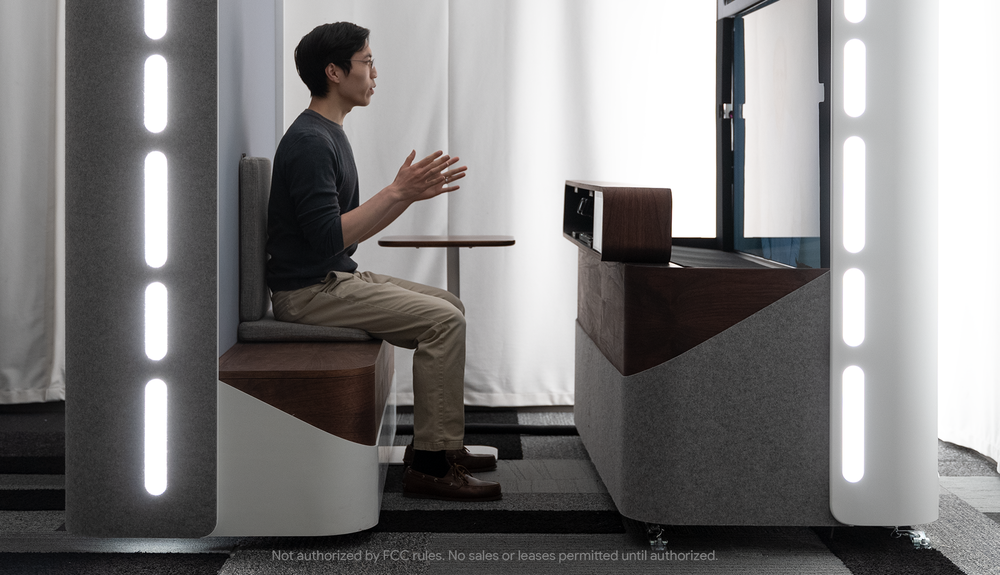Editorial: Google Targets Telepresence
Project Starline is designed to make remote communication feel more like in-person communication.

While it’s not yet available in stores or through a special TV offer, the future of teleconferencing is here—and it only requires four microphones, a handful of IR spotlights and projectors, a dedicated seating area with LED strip lighting, and more than a dozen cameras.
Project Starline is a real-time, bidirectional 3D telepresence system from Google. In a recently published technical paper, the company shared many of the details of the unique system, which was developed to make remote communication feel like in-person communication.
Technologically advanced? You bet. The system is designed to render a realistic 3D image and spatial audio without 3D glasses or body-worn microphones.
Do people like it? So far, the feedback has been positive. Google let 117 employees use the system for work meetings between offices in California, New York, and Washington over a nine-month period. The majority of users felt the system performed better than traditional videoconferencing in the areas of attentiveness, personal connection, reaction-gauging, and presence (that sense of “being there”).
A more controlled experiment showed statistically significant increases in several nonverbal behaviors compared to typical videoconferencing systems. Andrew Nartker, director of product management for Google, said the early results “show promise for Project Starline’s ability to facilitate more personal connections from afar.”
Is Project Starline ready to put other videoconferencing platforms on notice? Of course not. The custom-built system requires two structures—on both sides of the conversation—that are packed with dedicated equipment and computing power (and take up more space than your average cubicle). Researchers also acknowledge lingering issues with the reconstruction of hair and eyeglasses, and fast motion can result in texturing errors.
However, like so many other technological innovations, Project Starline is only going to get better. Google is already using Project Starline in more of its U.S. offices, and it has announced plans for trial deployments with enterprise partners. Such expanded use will no doubt lead to more refinements and, hopefully soon, a commercially available product that offers the promise of more engaging video calls.
A daily selection of features, industry news, and analysis for AV/IT professionals. Sign up below.

Mark J. Pescatore, Ph.D., has been the content director of Systems Contractor News since 2021. During his career, he's hosted and programmed two ongoing regional industry trade shows (including Future B2B's AV/IT Summit), produced and hosted podcasts and webinars focused on the professional video marketplace, taught more than a dozen college communication courses, co-authored the book Working with HDV, and co-edited two editions of The Guide to Digital Television.
